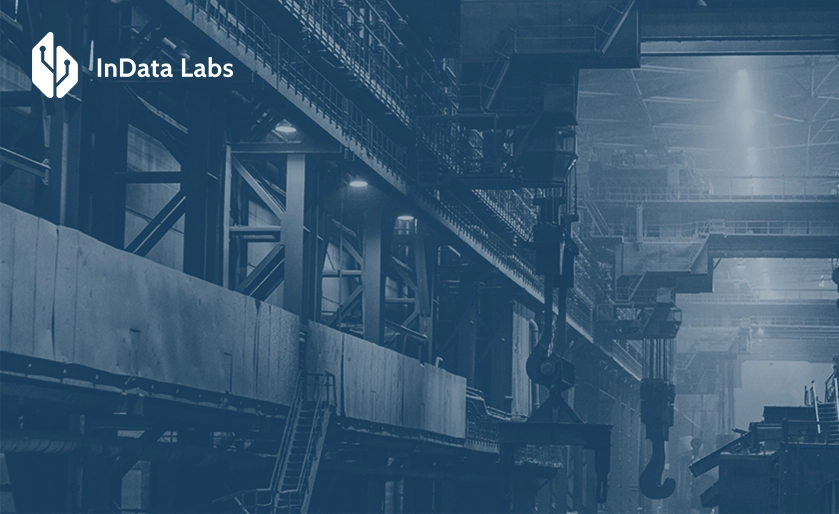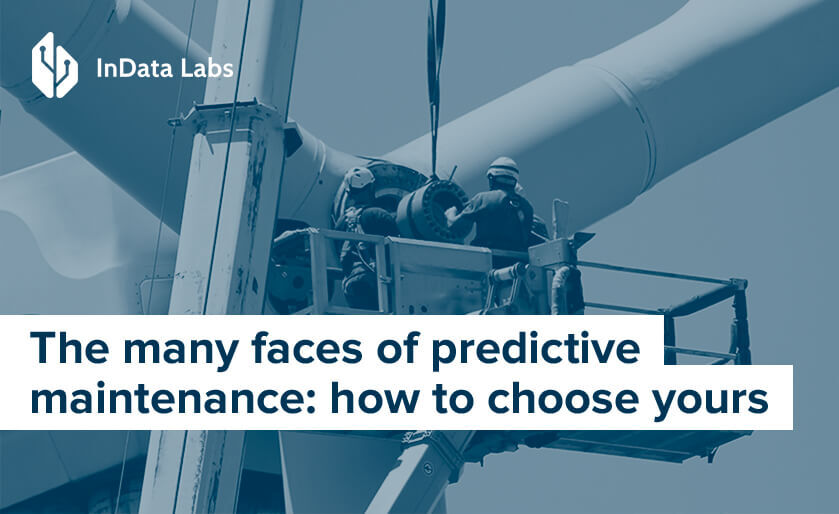Data analytics in the automotive industry is the catalyst for huge shifts today. Most people think of the radical transformation as being driven by a convergence of cutting-edge technologies like electrification, artificial intelligence, sensors, computer vision, and Advanced Driver Assistance Systems (ADAS). That’s true, but data is the common factor fueling everything.
Amidst complications plaguing the industry, the helpful insights gained from scrutinizing swathes of data are helping car manufacturers reduce costs while revamping innovations, vehicle and operational processes, and competitiveness. This even extends to sales and marketing, customer experience, and customer service.
Here, we’ll explore this force and consider its stumbling blocks. Then, we’ll examine a few use cases that drive home the point.
Data analytics in the automotive industry: Definition and six use cases
Data analytics in the automotive industry is reshaping how cars are designed, manufactured, and sold. In fact, no vehicle manufacturer or allied business can operate and generate money without absorbing automotive data analytics into its business capability modeling.
That’s how they can release forward-thinking, reliable products and features consumers want to see. But let’s consider the specifics. Here’s a breakdown of various instances where data analytics impacts the auto trade.
Predictive maintenance
Automotive firms are always seeking better approaches to fixing things before they break, a huge shift from the reactive fault detection and control measures of bygone years. So, what’s the predictive maintenance solution? Predictive analytics lets manufacturers harness sensor data to spot early warning signs of impending problems.
It’s like taking a peek under the car’s hood. It means companies are taking what they’ve learned and minimizing downtime while keeping cars on the road for longer.
Tesla is an obvious proponent of using machine learning (ML) algorithms to evaluate data from the many sensors in its electric models. They’re constantly looking at engine performance, brake wear and tear, and tire pressure.
ML and other predictive maintenance solutions study the details in real time, then give a heads-up when something’s wearing out.
Fuel efficiency optimization
As much as demand for EVs continues to grow, the vast majority of the market continues to rely on fossil fuels. Fuel efficiency has always been a huge deal for firms dealing in internal combustion engine (ICE) vehicles.
For one, data analytics empowers firms to manufacture fuel-efficient designs. Data-driven observations allow them to revamp engine performance as well as aerodynamics, both factors that are pretty useful for driving fuel efficiency. But this is not limited to car makers as it also enables those at the wheel to save fuel on the road.
In modern cars, the system can provide feedback for something as easy to miss as accelerating too hard or braking too often. Take Ford’s EcoMode technology, for example. It pulls information from a car’s onboard sensors, which it constantly analyzes, and then gives drivers feedback to empower them to adapt their driving behavior.
Data analytics in automotive fuel efficiency optimization informs fleet routing, too. Lowering idle times means fleet managers get to improve fuel efficiency and expedite deliveries.
Supply chain management
Supply chains can be extremely complex, particularly since COVID-19. Disruptions, component shortages, regulatory changes, and geopolitical conflicts are only a few factors forcing manufacturers to adapt and better their resilience.
Automotive big data analytics is driving that success, helping manufacturers gain control of their supply chains. It has proven useful in various areas, such as inventory management, delivery tracking, supply chain visibility, and identification of bottlenecks.
Take Volkswagen’s approach. The brand recently developed a data-driven system called the Responsible Supply Chain System (ReSC). The system helps identify risks and guarantee its suppliers meet environmental and social standards. ReSC evaluates suppliers through the carmaker’s Sustainability Rating (S-Rating), which analyzes several factors from emissions to ethical sourcing practices.

Source: Unsplash
Data analytics has also been instrumental in upgrading Volkswagen’s supply chain visibility. Tracking the movement of vehicles and components throughout the supply chain has allowed the company to pinpoint bottlenecks and take corrective steps.
Vehicle performance optimization
Vehicle performance is understandably a top priority for any customer looking to buy a car, especially as modern motors grow increasingly complex. Apart from pricing and comfort, people look for reliability, efficiency, and safety. That’s why manufacturers continually refine those features—and data analytics gives them the power to do that.
For example, by monitoring real-time metrics and evaluating collected information, engineers can uncover nuances affecting performance and fix them long before they evolve into costly and potentially dangerous hazards. Also, On-Board Diagnostics (OBD) systems can help repair technicians with self-diagnosis and reporting. You can also access and track that data yourself in real time.
Customer experiences
Customers are the lifeblood of the automotive industry. But behavior and demands are continually shifting, so automotive companies must recognize the need to do more than just build reliable motors.
Delivering exceptional customer experiences is what moves the needle in a competitive market. And data analytics can help brands deliver customer satisfaction. All that juicy data gathered from myriad sources gives companies a unique perspective on customer behaviors and preferences. Those perspectives can then be actioned. And those actions lead to happier customers and enhance loyalty.
Let’s illustrate using BMW’s CarData, telematics data that BMW cars collect and send to the company’s servers. Car owners can grant access to third-party insurance firms and maintenance providers. Those third parties then use the data to lift their services. CarData is part of BMW ConnectedDrive, an even broader range of services that harnesses data analytics.
Another use case of data analytics in the automotive industry for enhancing customer experiences? Voice recognition. Many new cars have branded or third-party voice assistants. But it’s more than just playing music or checking for directions. Advanced voice assistants rely on data to learn about driver preferences and anticipate needs. They even offer proactive suggestions.
Autonomous vehicles
By 2030, up to 15% of all automotive sales will consist of autonomous vehicles, says a McKinsey report. Already, many modern cars come with partial autonomous features like self-parking and lane assist, but that’s just the tip of the iceberg.
Companies like Tesla (with Autopilot) are showing glimpses of the incredible things we can expect from autonomous vehicles soon. Mind, Autopilot is only classed at Level 2 under the SAE six levels of vehicle automation.
So, where does data analytics apply here? Well, everywhere. Everything from sensor and GPS data to traffic patterns must be processed in microseconds for the vehicle to drive safely. Intel estimates that only the data from sensors (including LiDAR, radar, cameras, and ultrasonic sensors) can reach 4TB daily.

Source: Unsplash
The challenges of big data analytics for automotive companies
Mordor Intelligence reports that the Big Data market in the automotive industry is anticipated to grow from $5.9b in 2024 to over $12.8b by 2029. That’s pretty rapid expansion, and it captures how promising data analytics could be.
However, carmakers and allied companies face several hurdles, including:
- The volume and complexity of data: As discussed, there’s masses of data at your disposal from different places like sensors in vehicles and connected devices. Managing, processing, and analyzing all of this gets more complicated when working on a large scale. What’s more, this information can be rather complex, so relies on advanced infrastructure and algorithms to make the most of it, which can be costly and difficult to maintain.
- Data quality and reliability: Poor-quality data leads to inaccurate observations, faulty predictions, and less-than-optimal decisions. In safety-sensitive areas like automotives, it’s essential that data is high-quality, accurate, and reliable. Anything that is incomplete, outdated, or corrupt – which could be down to inconsistent collection methods or hardware malfunctions – becomes unusable for analytical purposes.
- Data security and privacy: Connected cars and digital services open up the door to privacy concerns and cyberattacks. Failure to meet relevant regulations like GDPR or take measures to protect customer data could land your firm in hot water.
- Data integration: Like many businesses, carmakers often face data silos across different departments. That means teams like R&D, sales, and customer service don’t make the data they collect easily accessible to others, which leads to poor decision-making and wasted time. Integrating all of this info is complex, time-consuming, and costly, particularly if you’re working with outdated legacy systems. But it may be that you have to invest in IT infrastructure or organizational change to be more efficient.
- Talent shortages: Analytics, ML, and AI are still emerging fields, so many industries – particularly auto – experience a shortage of skilled employees with the right experience. If you can’t bring the right data scientist, engineer, or analyst onto your team, it may be difficult to progress with planned initiatives or tap into opportunities for innovation.
- Data governance and organizational challenges: Data governance frameworks outline who owns the data you gather, how it’s used, and how it’s protected. Many businesses fail to understand the importance of this, and in large auto organizations, in particular, aligning departments around a unified strategy and guaranteeing compliance is understandably difficult. Lack of clear governance leads to data misuse, inconsistencies when making decisions, and issues in meeting legal requirements.
The industry is becoming more connected and more data-driven, so realizing the benefits of data analytics means addressing complications head on. Otherwise you can’t expect to be truly competitive and innovative. Start by making sure you have processes in place to address the above, from implementing security protocols that protect data to adopting procedures for data management.
Be consistent in the way you collect and analyze data so that you have a stable foundation to then learn from. Invest in the right tools to clean, validate, and standardize the information you collect. This can be resource-intensive but it’s the best route if you want to feel safe knowing your decisions are more accurate.

Source: Unsplash
Stay abreast of relevant privacy regulations for your sector and location, and make sure you have robust security protocols in place that adhere to those laws. Anyone who handles data at your company must be aware of these measures, so take time to train them in data handling best practices. That goes for specialized talent, too – regularly upskill and train in-house data analysts, engineers, and scientists so they stay at the top of their game. Proactively investing in infrastructure, talent, and governance is the best way to tap into the power of automotive data analytics.
Where to start with data analytics in the automotive industry
If you’re just starting out with data analytics, you’re bound to find the road ahead daunting, especially considering the challenges we’ve outlined and the sheer scope of the thing.
That said, with the proper approach and strategies, you will be able to tap into the benefits. Most importantly, that approach must be structured as follows:
- Goals: First, define your objectives. What are the goals your business is chasing? Where does data analytics apply? You can’t afford to take a scattershot approach. Instead, pinpoint specific areas that can drive innovation and improvement.
- Available data: Next, take stock of the data you currently have and assess your needs. Of course, it will depends on your operation (you could be a manufacturer, supplier, dealership, or service provider).
- Data strategy: Once you have that down, it’s time to create a comprehensive data strategy. This is where you’ll need some experts on your team. Your strategy should include the data infrastructure you’ll need so you have the right systems in place to collect, store, and process data.
- Data governance: Don’t forget about data governance, either. Establish clear policies around data access, usage, and compliance. That way, you can keep your data secure and maintain its integrity.
- Tools and tech: Other things to consider include getting the right tools and tech for your needs. There are plenty around, so you want to focus on platforms that align with your objectives.
Key takeaways
Data analytics in the automotive industry is a fascinating, ever-evolving field. There’s plenty of budding opportunities for everyone involved—car manufacturers, suppliers, car dealerships, and drivers. As we have seen in this article, the possibilities unlocked by data analytics can be huge, generating a whole host of benefits—from enhanced safety to higher energy efficiency. Tapping into exciting revelations of data analytics is a no-brainer, and getting started is simpler than you think—just follow the quick-start guide in this article.



